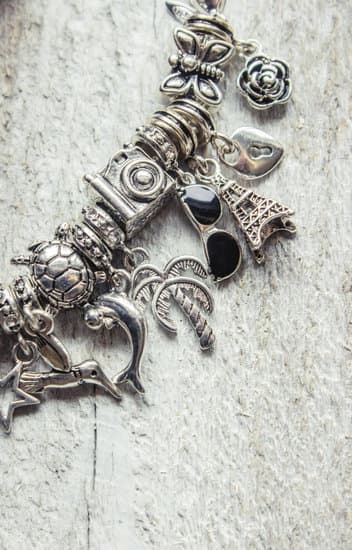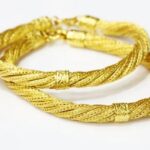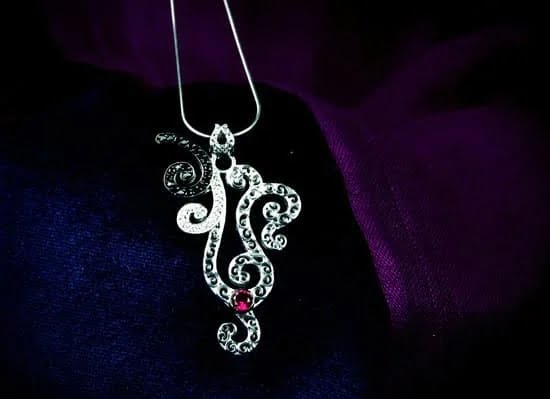Diamonds are often considered prized possessions, adding beauty and value to various pieces of jewelry. However, there may come a time when you need to remove these exquisite gems from their settings. Whether it’s for resizing a ring, upgrading an heirloom piece, or preparing to sell your jewelry, knowing how to safely and effectively remove diamonds is crucial.
In this comprehensive guide, we will explore the common reasons for removing diamonds from jewelry and provide step-by-step instructions on how to do so. We will also delve into the complexity of assessing the structure and components of jewelry with diamonds, highlighting different setting types and potential challenges that may arise during the removal process.
To successfully remove diamonds from jewelry, it is essential to gather the right tools and materials. We will discuss the necessary supplies you’ll need, including jewelers’ pliers, tweezers, prong pushers, and other helpful items like a jeweler’s loupe and cleaning solutions for optimal outcomes. Additionally, we will prioritize your safety throughout the diamond removal process by emphasizing the importance of protective eyewear, gloves, and proper handling techniques for fragile pieces.
By following our step-by-step guide tailored for different types of jewelry settings such as prong settings, bezel settings, and channel settings/bars, you’ll be able to confidently extract diamonds while preserving the integrity of your precious jewelry. Furthermore, we will address common troubleshooting issues that may arise during removal and provide alternative methods when traditional approaches prove challenging.
Stay tuned as we also offer post-removal care tips to help maintain your jewelry’s condition after diamond removal. We’ll discuss proper cleaning practices along with guidance on professional inspection and revaluation if needed. Additionally, we’ll explore creative options for repurposing your removed diamonds in new designs in collaboration with jewelers or designers.
Removing diamonds from jewelry may seem like a daunting task, but with the right knowledge and techniques, you can achieve it successfully. So, let’s dive in and discover the world of diamond removal together, ensuring that your treasured gems can serve new purposes or be enjoyed in an entirely different way.
Assessing the Complexity
When it comes to removing diamonds from jewelry, it is crucial to have a good understanding of the structure and components of the piece. Different types of settings can affect the removal process, and there may be potential challenges and complications that arise during the removal. By assessing the complexity of the jewelry, you can better prepare yourself for a successful diamond removal.
One common type of setting is prong settings. These settings secure the diamond in place using small metal prongs that hold it firmly. To remove a diamond from a prong setting, you will need to gently release the prongs using appropriate tools such as jewelers’ pliers or tweezers. Once the prongs are lifted or pushed aside, you can then safely extract the diamond from its setting.
Another type of setting is bezel settings. In bezel settings, the diamond is surrounded by a metal rim or band that holds it securely in place. To remove a diamond from a bezel setting, you may need to unsolder the bezel using techniques like jewelry torches or lasers. This requires precision and caution to avoid damaging the diamond or other parts of the jewelry.
Channel settings or bars are another type of setting commonly used for diamonds in jewelry. In channel settings, multiple diamonds are placed in between two walls of metal creating a channel-like appearance. Removing diamonds from this type of setting can be more challenging as you need to maneuver your tools carefully so as not to harm the channel walls or other diamonds present.
It’s important to note that these are just a few examples of different types of settings used in jewelry with diamonds. Understanding their specific characteristics will help you approach their removal process more confidently and successfully.
Tools and Materials Needed
One of the essential aspects of successfully removing diamonds from jewelry is ensuring that you have the right tools and materials. Having the necessary supplies not only makes the process more efficient but also helps prevent any potential damage to the diamonds or the jewelry itself. Here are some key tools and materials needed for a successful diamond removal:
- Jewelers’ Pliers: These pliers come in various shapes and sizes and are designed specifically for handling delicate jewelry components. They are particularly useful for manipulating prongs or clasps during the removal process.
- Tweezers: Fine-tipped tweezers are invaluable when it comes to precision work. They allow you to handle small diamond stones without causing any scratches or other damage.
- Prong Pushers: A prong pusher is a specialized tool used to gently lift and manipulate prongs, making it easier to remove diamonds from prong settings. It is vital to use an appropriate prong pusher that matches the specific shape and size of the prongs.
- Jeweler’s Loupe: A jeweler’s loupe is a magnifying device that provides enhanced clarity and vision when examining and working with diamonds. It helps you identify any flaws or details that may affect the removal process.
- Cleaning Solutions: Depending on the condition of the jewelry, you may need cleaning solutions to remove any dirt, grime, or residue before attempting diamond removal. It is crucial to choose a non-abrasive cleaning solution that will not harm the diamonds or other precious gemstones.
| Tool/Material | Description |
|---|---|
| Jewelers’ Pliers | Precise pliers for manipulating jewelry components |
| Tweezers | Fine-tipped tweezers for handling small diamonds |
| Prong Pushers | Specialized tool for lifting and manipulating prongs |
| Jeweler’s Loupe | Magnifying device for enhanced vision and examination of diamonds |
| Cleaning Solutions | Non-abrasive solutions for removing dirt and grime from jewelry |
It is important to note that these tools and materials may vary depending on the specific type of jewelry and setting. For instance, if you are working with a bezel setting, you may require a jewelry torch or laser to unsolder the bezel accurately. Similarly, other specialized tools may be necessary when dealing with unique or complex settings.
In addition to the tools listed above, it is always recommended to have appropriate safety gear such as protective eyewear and gloves. These precautions help minimize the risk of injury while handling jewelry or using certain tools.
By ensuring that you have the right tools and materials at your disposal, you can approach diamond removal with confidence and increase your chances of success. Remember to handle each piece of jewelry with care and take your time throughout the process to maintain the integrity of both the diamonds and the jewelry.
Safety Precautions
Removing diamonds from jewelry requires the utmost care and attention to safety. Prioritizing safety during the diamond removal process is crucial to avoid potential accidents and damage. Here are some essential safety precautions to consider:
- Protective Eyewear: It is highly recommended to wear protective eyewear, such as safety glasses or goggles, during the diamond removal process. This will protect your eyes from any flying debris, accidental slips of tools, or shards that may occur during the removal.
- Gloves: Wearing gloves while removing diamonds can provide an added layer of protection for both your hands and the jewelry. Opt for gloves made of materials like latex or nitrile to ensure a secure grip on the tools and minimize the possibility of scratching or damaging delicate jewelry pieces.
- Workspace Organization: Ensure that your workspace is clean, well-lit, and organized before starting the diamond removal process. Cluttered workstations can increase the likelihood of accidents or misplacing valuable gemstones. Keep all tools neatly arranged and within reach to maintain focus and prevent any unnecessary mishaps.
- Proper Tool Handling: Take special care when handling sharp instruments like jewelers’ pliers, tweezers, or prong pushers. Always hold them with a firm grip and avoid applying excessive force that might result in slipping or causing unintended damage to your jewelry piece.
- Fragile Jewelry Pieces: Fragile jewelry requires extra caution during diamond removal. If you are working with a delicate setting or material such as antique jewelry or thin bands, consider placing a soft cloth or padding below it to protect against accidental scratching or bending.
Following these safety precautions will help create a safer environment for removing diamonds from jewelry without compromising personal well-being or potentially damaging precious items.
| Safety Precautions |
|---|
| Protective Eyewear |
| Gloves |
| Workspace Organization |
| Proper Tool Handling |
| Fragile Jewelry Pieces |
Step-by-Step Guide
Prong Settings
When it comes to removing diamonds from jewelry with prong settings, a careful and precise approach is essential. To begin, gather the necessary tools, including jewelers’ pliers and tweezers. Start by inspecting the prongs and determining if they need to be lifted or pushed aside. Use the appropriate tool to gently release each prong. It’s crucial to apply just enough pressure to avoid bending or breaking the prongs.
Once all the prongs have been loosened, you can proceed with removing the diamond. Using your tweezers, carefully lift the diamond out of its setting by gripping it from the sides or top, avoiding any direct contact with the stone. Make sure to handle the diamond with care to prevent any scratches or damage.
Bezel Settings
Removing diamonds from bezel settings requires a slightly different technique. You will need a jewelry torch or laser for this process. First, put on protective eyewear and gloves for safety. Examine the bezel carefully and identify any soldered points that hold it in place.
If there are soldered points, heat those areas with a jewelry torch until the solder melts and separates from both ends of the bezel setting. If your jewelry has a laser-soldered bezel, consult a professional jeweler who will have access to specialized equipment for safe removal.
After carefully unsoldering the bezel, use your tweezers or pliers to safely extract the diamond from its setting. Be cautious not to grip too tightly on the diamond as it may cause damage.
Channel Settings/Bars
Removing diamonds from channel settings/bars requires delicate maneuvering to access each stone without harming the integrity of the channel walls. Begin by using a jeweler’s loupe or magnifying glass to inspect how the stones are secured within their channels.
To carefully extract the diamonds, you can use various tools such as a prong pusher or a narrow tweezers designed for fine work. Gently maneuver the tool between the channel walls to release each stone individually. Exercise caution and patience during this process to prevent any damage to the jewelry or stones.
If certain stones are particularly stubborn or challenging to remove, consider seeking professional assistance from a jeweler who has experience in working with channel settings.
By following these step-by-step instructions specific to various types of jewelry settings, you can safely remove diamonds from your jewelry without causing any harm to the precious stones or the piece itself. Remember to always work with patience, precision, and seek professional help whenever necessary.
Troubleshooting
During the process of removing diamonds from jewelry, there may be certain obstacles or challenges that arise. Thankfully, with some troubleshooting techniques, these issues can be overcome. Here are some common obstacles that you may encounter when removing diamonds from jewelry and their corresponding solutions:
- Stubborn Prongs: Sometimes, the prongs holding the diamond in place can be difficult to release. In this case, you can try using a prong pusher to gently apply pressure and wiggle the prong back and forth until it loosens. If the prong remains stubborn, applying a small amount of lubricant like coconut oil or WD-40 can help loosen it without causing any harm to the diamond.
- Damaged Settings: If you come across a setting that is damaged or compromised in any way, it is important to proceed with caution. Take extra care when working with a damaged setting to avoid causing further damage. If possible, consult with a professional jeweler who has experience in repairing or restoring jewelry settings.
- Difficult Channel Settings/Bars: Channel settings or bars often pose a challenge when trying to access the diamonds for removal. The narrow space between each diamond can make it tricky to maneuver tools safely. To address this issue, consider using specialized tools such as angled tweezers or bent wire picks that are designed specifically for working in tight spaces.
- Alternative Removal Methods: In some cases, traditional methods of diamond removal may not be feasible due to factors such as fragile or intricate settings. In such situations, alternative methods can be explored. One option is laser technology which uses highly concentrated beams of light to precisely remove diamonds without damaging surrounding areas. Another option is seeking assistance from experienced professionals who have specialized knowledge in handling complex removals.
By being prepared for potential obstacles and having solutions at hand, you can navigate through common challenges encountered during diamond removal. Remember, if you are unsure or uncomfortable with any aspect of the removal process, it is always advisable to seek professional help from a trusted jeweler or gemologist.
Post-Removal Care
Cleaning and Polishing
Once you have successfully removed the diamonds from your jewelry, it is crucial to take proper care of the piece to maintain its condition. One important aspect of post-removal care is cleaning and polishing. Over time, jewelry can accumulate dirt, oils, and other substances that may dull its appearance. To restore its shine, gently clean the piece using a mild detergent or specialized jewelry cleaner. Avoid using harsh chemicals or abrasive materials that can damage the metal or gemstones.
For intricate pieces with hard-to-reach areas, you can use a soft-bristle toothbrush or a dedicated jewelry cleaning brush. Be sure to rinse thoroughly to remove any residue and pat dry with a soft cloth. Additionally, periodic professional cleaning by a jeweler can help remove deep-seated dirt and grime.
After cleaning, consider polishing the metal components to enhance their luster. Use a jewelry polishing cloth or a non-abrasive polishing compound specifically designed for your type of metal. Follow the instructions carefully and gently rub the surface in small circular motions to achieve a polished finish.
Storage
Proper storage is essential for preserving the condition of your jewelry after diamond removal. Ideally, store each piece individually in a soft pouch or separate compartments within a jewelry box to prevent scratching and tangling. For additional protection, consider using anti-tarnish strips or silica gel packets in the storage area to minimize oxidation and moisture accumulation.
Avoid exposing your stored jewelry to extreme temperatures, humidity, direct sunlight, or harsh chemicals as these factors can degrade both metals and gemstones over time. It is also advisable to periodically inspect your stored pieces for any signs of damage or required maintenance.
Professional Inspection
Even after removing diamonds from your jewelry, it is wise to have it professionally inspected by a reputable jeweler. They can assess the overall condition of the piece, check for any weaknesses or damage, and recommend necessary repairs or adjustments. Additionally, a professional inspection can include revaluation of the jewelry to update its insurance coverage or for resale purposes.
By investing in professional inspection and maintenance, you can ensure that your jewelry retains its value and appearance for years to come. Regular care and occasional servicing will help extend the lifespan of the piece and allow it to be enjoyed by future generations.
Taking proper care of your jewelry after diamond removal is essential for maintaining its beauty and longevity. Cleaning, polishing, proper storage, and professional inspections are key components of post-removal care. By following these practices diligently, you can ensure that your beloved pieces remain in excellent condition throughout their lifetime.
Repurposing Diamonds
Diamonds hold immense value and sentiment, making them too precious to abandon even when removed from jewelry. Rather than having them sit unused in a drawer, there are numerous creative options for repurposing diamonds and giving them new life. By exploring these possibilities, you can transform your diamonds into beautiful and meaningful pieces that can be enjoyed for years to come.
One popular option for repurposing diamonds is designing custom jewelry. Whether it’s an engagement ring, necklace, or pair of earrings, working with a jeweler or designer can help bring your vision to reality. With their expertise, they can guide you in choosing the right setting and design that best showcases the beauty of your diamonds. Custom-made jewelry allows you to create unique pieces that reflect your personal style and preferences.
Another creative option is incorporating diamonds into existing jewelry. If you have a cherished piece that could use a little sparkle upgrade, adding diamonds can instantly enhance its beauty and sentimental value. Whether it’s adding diamond accents to a pendant or embellishing bracelet links with diamonds, this method allows you to breathe new life into old favorites while preserving their sentimental significance.
For those who appreciate unconventional approaches, repurposing diamonds beyond traditional jewelry is an exciting possibility. Diamonds can be incorporated into accessories like brooches, hairpieces, or cufflinks for a touch of elegance and sophistication. They can also be used in home decor items such as picture frames or decorative art pieces to add a luxurious element to your living space.
When exploring these creative options for repurposing diamonds, it’s important to work with trusted professionals who have experience working with gemstones. They can provide guidance on the best way to handle and showcase your diamonds while ensuring the integrity of the final piece. Additionally, seeking professional assistance ensures that the repurposed diamond jewelry meets high standards of craftsmanship and durability.
By considering these options for repurposing diamonds, you can give your precious gemstones new purpose and create stunning pieces that will be cherished for generations to come. The repurposing process allows you to honor the sentimental value of your diamonds while celebrating their beauty in innovative and meaningful ways. So don’t let your removed diamonds go to waste; explore the possibilities and ignite your creativity.
Conclusion
In conclusion, safely and successfully removing diamonds from jewelry requires careful consideration, the right tools, and a methodical approach. Whether you are resizing, upgrading, or selling your jewelry, it is essential to approach the diamond removal process with patience and precision. Throughout this article, we have explored the various steps involved in safely removing diamonds from different types of settings.
Understanding the complexity of your jewelry is crucial before beginning the removal process. Assessing the structure and components of your piece will help you anticipate any potential challenges or complications that may arise. By gathering the necessary tools and materials such as pliers, tweezers, prong pushers, protective eyewear, and gloves, you will be well-prepared for a successful diamond removal.
Prioritizing safety throughout the process is paramount. Wearing protective gear and handling fragile jewelry pieces with care will help prevent accidents or damage. The step-by-step guide provided for different types of settings like prong settings, bezel settings, and channel settings/bars ensures that you understand how to remove diamonds while preserving the integrity of your jewelry.
If you encounter any troubleshooting issues such as stubborn prongs or damaged settings during diamond removal, there are alternative methods available that can overcome these obstacles. Additionally, post-removal care is essential to maintaining the condition of your jewelry. Proper cleaning, polishing, and storing practices will help keep your piece in optimal condition.
Lastly, consider repurposing your removed diamonds by incorporating them into new jewelry pieces. Working with jewelers or designers can bring new designs to life using these repurposed diamonds. Remember that if you ever feel uncertain or lack experience in diamond removal techniques, seeking professional assistance is always a viable option.
By approaching diamond removal with confidence and knowledge gained from this comprehensive guide, you can safely remove diamonds from your jewelry and utilize them in new ways while preserving their value and beauty.
Frequently Asked Questions
Can you take diamonds out of a ring?
It is possible to take diamonds out of a ring, but it requires professional expertise and delicate handling. Diamonds are typically set in rings using prongs or other types of settings that secure the stone in place. To remove a diamond from a ring, jewelers use specialized tools to carefully loosen or lift the prongs holding the diamond.
Once the prongs are sufficiently moved, the diamond can be gently taken out. However, it is crucial to note that removing diamonds from a ring should only be done by experienced professionals to prevent any damage to the stone or jewelry.
How do you remove stones from gold jewelry?
Removing stones from gold jewelry involves different techniques depending on the type of setting used. One common method is using pliers or similar tools to carefully bend or manipulate metal prongs that hold the stone in place. By adjusting these prongs, the stone can gradually be loosened and removed without causing any damage.
Another technique involves applying heat to soften any soldered joints while protecting the surrounding areas with special materials such as heat-resistant putties or bricks. This allows for easier removal of stones without damaging them or compromising the integrity of the gold jewelry.
How do you remove stone from prong settings?
Removing stones from prong settings requires precision and patience to ensure both the stone and setting remain intact during the process. First, jewelers carefully examine each prong around the stone and determine their level of tightness with supporting tools like magnifying loupes or microscopes. Using specialized pliers, they gently manipulate each prong so it shifts away from holding onto the gemstone securely.
The process may require multiple adjustments until all prongs have been lifted enough to release pressure on the stone without excessive force. When removing stones from prong settings without harming their integrity, it is crucial for professionals to possess excellent dexterity and knowledge about different types of settings and gemstones involved in order to achieve successful results.

Welcome to my jewelry blog! My name is Sarah and I am the owner of this blog.
I love making jewelry and sharing my creations with others.
So whether you’re someone who loves wearing jewelry yourself or simply enjoys learning about it, be sure to check out my blog for insightful posts on everything related to this exciting topic!





